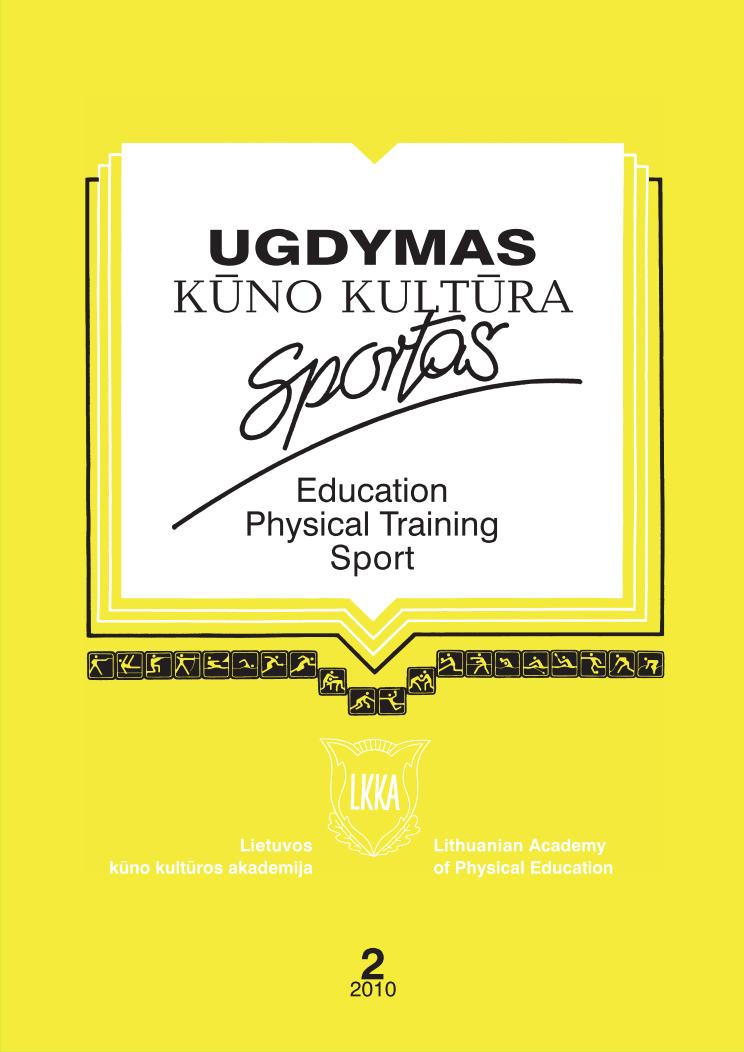Does Performance of Speed-Accuracy Movements Depend on Gender and the Left or the Right Hand?
Abstract
The aim of the study was to establish the differences in men and women’s performance of speed-accuracy movements with their left (LH) and right (RH) hands. The research participants were 24 healthy right-handed subjects: 12 males (aged 20.8 ± 1.1 years) and 12 females (aged 21.4 ± 1.0 years). The research was carried out in the Laboratory of Human Motor Control at the Lithuanian Academy of Physical Education (LAPE) applying the analyzer of dynamic parameters of human leg and arm movement (DPA-1; Patent No. 5251; 2005 08 25), which is used for the qualitative estimation of the dynamic parameters of one arm and leg target movement, two arms and legs coordinated and independent target movements, when the resistance power and target are coded with different programmable parameters. The task was performed with the right and then with the left hand (50 repetitions with each hand). The subjects had two tasks: a) to react as quickly as possible (simple task); b) to react as quickly as possible and to hit the target on a computer screen quickly and accurately (complicated task). We registered the maximal and mean movement speed, reaction time, movement trajectory and intraindividual variability of the right and the left hands. Conclusions. There was no significant difference in accuracy between female and male subjects, thought female subjects performed speed-accuracy task more slowly than men. Both males and females performed the speed-accuracy task with their right hand faster and more accurately than with their left hand. Performing movements with different hands the indices of reaction time did not differ significantly. Both males and females performed movements with their right and left hands with the same intraindividual variability.
Keywords: movement control, reaction time, speed-accuracy task, right and left hand, gender.
Downloads
Published
Issue
Section
License
Copyright (c) 2018 Baltic Journal of Sport and Health Sciences

This work is licensed under a Creative Commons Attribution 4.0 International License.






